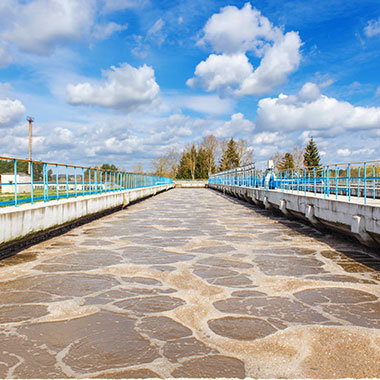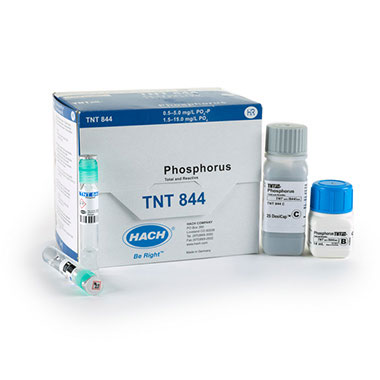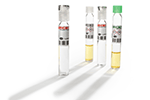-
Prodotti
-
Strumenti da laboratorio
-
Misuratori e sonde di laboratorio
Standard per taratura Misuratori e sonde Sension+
- Sostanze chimiche, reagenti e standard
-
Analizzatori online
Analizzatori di ammonio Analizzatori di cloro
- CL17sc
- CL10 sc Amperometrico
- 9184 sc Amperometrico
- Analizzatore colorimetrico di cloro CL17sc Basso Range
Analizzatori di fosfato Analizzatori di silice Analizzatori di torbidità Cabine di protezione per analizzatoriAnalizzatori della serie EZ- Ferro
- Alluminio
- Manganese
- Fosfato
- Cloruro
- Cianuro
- Fluoruro
- Solfato
- Solfuro
- Arsenico
- Cromo
- Rame
- Nichel
- Zinco
- Ammonio
- Azoto totale
- Fosforo totale
- Fenolo
- Acidi grassi totali
- Alcalinità
- ATP
- Durezza
- Tossicità
- Pretrattamento dei campioni
- Boro
- Colore
- Nitrato
- Nitriti
- Silice
- Perossido di idrogeno
- EZ Series Reagents
- EZ Series Accessories
- Serie EZ sc - Complessi inorganici
- Serie EZ sc - Metalli
- Serie EZ sc - Nutrienti
-
Sensori e controller on-line
Controller digitali (trasmettitori) Controller (analogici)
- SC4500
- Orbisphere 366x Ex
- Orbisphere 410/510 diossido di carbonio
- Orbisphere 410/510 ossigeno
- Orbisphere 51x idrogeno
Sensori per pH e ORP- 1200-S Redox
- 1200-S pH
- 12mm pH/Redox
- 8362 sc elevata purezza
- Cominazione pH/Redox
- LCP Redox
- Redox digitale differenziale
- pH differenziale
- pH digitale differenziale
Sensori di conducibilità- 3400 contatto analogico
- 3400 contatto digitale
- 3700 induttivo analogico
- 3700 induttivo digitale
- 3798 sc senza elettrodo
- 9523 conduttività cationica
- 9525 DCCP System
- Sistemi da laboratorio automatizzati
- Multiparameter Online Panels
- Claros Water Intelligence System
- Campionamento
-
Forniture e attrezzature per laboratori
ApparatoLibretti e materiale di riferimento Materiali di consumo generici per laboratoriStrumenti Vetreria/Articoli in plastica
- Kit test e striscette
-
Microbiologia
Accessori e sostanze chimiche Articoli per laboratoriTerreni disidratati Terreni pronti
- Elettrochimica
-
Strumenti da laboratorio
- PARAMETRI
-
Soluzioni software
-
Claros Water Intelligence System
Aspetti chiave dei prodotti Process Management
- Soluzioni per:
- Rimozione di BOD/COD
- Nitrificazione/denitrificazione
- Rimozione del fosforo
- Gestione dei fanghi
Data Management- Soluzioni per:
- Raccolta
- Visualizzazione e analisi
- Generazione di report
- Accuratezza dei dati
Instrument Management- Soluzioni per:
- Manutenzione
- Risoluzione dei problemi
- Accesso remoto
- Confronto tra laboratorio e processo
-
Claros Water Intelligence System
- Industrie
- Servizi
- Notizie ed Eventi
Italia
Scegli il Paese o Regione:
Europe
Americas
Asia - Australasia
- Australia
- Mainland China
- India
- Indonesia
- Japan
- Malaysia
- New Zealand
- Philippines
- Singapore
- South Korea
- Thailand (Thai)
- Taiwan
- Vietnam
Middle East - Africa
Fosforo
Cos'è il fosforo?
Il fosforo (P) è un elemento chimico con numero atomico 15 e massa atomica 31. A causa della sua elevata reattività, il fosforo non esiste in natura come elemento libero. Il fosforo in genere è presente sotto forma di fosfato nei minerali. Il fosfato si trova generalmente nella crosta terrestre a una concentrazione di circa 1 grammo per chilogrammo.
I due tipi di fosforo elementare sono il fosforo bianco e il fosforo rosso. Quando viene esposto all'ossigeno, il fosforo bianco emette un debole bagliore causato dall'ossidazione (nota anche come chemiluminescenza).
'Il fosforo appartiene agli elementi del gruppo dell'azoto che è costituito da azoto, fosforo, arsenico, antimonio, bismuto e ununpentio (al quale è stato recentemente assegnato il nome moscovio). Questi elementi sono raggruppati in virtù della loro struttura atomica simile, che gli conferisce la capacità di formare composti stabili grazie alla loro tendenza a formare legami covalenti doppi e tripli. Ad eccezione dell'azoto (che rimane un gas), gli altri elementi del gruppo dell'azoto sono solidi a temperatura ambiente.
Organismi complessi come piante e animali necessitano di fosforo perché i fosfati sono un componente di DNA, RNA, ATP e fosfolipidi. L'estrazione mineraria del fosforo ha lo scopo di utilizzarlo in detergenti, pesticidi, agenti nervini e prevalentemente fertilizzanti.
Fosfati/ortofosfato
Nell'ortofosfato (uno dei fosfati più comuni), un atomo di fosforo è legato a quattro atomi di ossigeno. L'ortofosfato viene talvolta chiamato "fosforo reattivo" perché si lega facilmente ad altri elementi e composti con carenza di elettroni, poiché i tre elettroni "extra" sugli atomi di ossigeno hanno una forte tendenza a legarsi con protoni.
Fosfati condensati
I fosfati condensati sono molecole multiple di ortofosfato "condensate" insieme e che condividono un legame covalente tra atomi adiacenti di fosforo (P) e ossigeno (O). Questo gruppo comprende metafosfato, pirofosfato e polifosfato, spesso utilizzati per il controllo della corrosione nei sistemi di distribuzione dell'acqua potabile.
Fosforo totale/fosforo organico
Il fosforo totale è la somma di tutto il fosforo presente: ortofosfato/fosfati, fosfati condensati e fosforo organico. Il fosforo organico è solitamente presente sotto forma di fosfati contenuti all'interno o legati a un composto organico.
Perché misurare il fosforo?
Anche se i fosfati non contribuiscono a problemi di gusto e odore e, di conseguenza, possono non essere un target nell'acqua potabile, livelli elevati di fosfato nello scarico delle acque reflue possono avere un impatto significativo sull'ecosistema circostante. Non solo: elevate quantità di fosfati nell'acqua di sorgente possono accelerare la crescita di tipi di alghe e piante, con conseguente eutrofizzazione e fioriture algali. Quando ciò si verifica, la sottrazione di ossigeno che interessa i pesci e la vita acquatica causa grandi morie di pesci e la distruzione degli habitat. La misura del fosfato negli effluenti delle acque reflue è fondamentale per mantenere un ecosistema sano e proteggere la fauna selvatica. Molte aree hanno limiti di scarico rigorosi per i fosfati per tutelare l'ecosistema che riceve l'acqua. Oltre a proteggere l'ecosistema, il mancato monitoraggio e il mancato controllo dei livelli di fosfati può comportare anche violazioni e sanzioni. Gli impianti di acqua potabile che utilizzano fosfati per il controllo della corrosione possono avere la necessità di monitorare i fosfati nell'acqua finale, nel sistema di distribuzione e in altre fasi del processo di trattamento. Le soluzioni Hach® sono sviluppate per garantire la conformità e fornire agli operatori le conoscenze di cui hanno bisogno per prendere decisioni sul trattamento.
Hach è in grado di offrirti gli strumenti di analisi, le risorse, la formazione e i software necessari per monitorare e gestire con successo i livelli di fosforo nella tua specifica applicazione di processo.
Prodotti in primo piano per la misura del fosforo
Gli analizzatori Phosphax di Hach sono progettati per le installazioni all'aperto e offrono un facile accesso ai reagenti e alle parti riparabili.
Acquista subitoAnalizzatori di fosforo totale della serie EZ
Gli analizzatori online della serie EZ offrono varie opzioni per il monitoraggio del fosforo totale nell'acqua.
Acquista subitoAnalizzatori di fosfato della serie EZ
Gli analizzatori online della serie EZ offrono varie opzioni per il monitoraggio del fosfato nell'acqua.
Acquista subito5500 sc Analizzatore di fosfati
L'analizzatore di fosfato 5500 sc richiede solo 2 litri di reagente per funzionare incustodito per un massimo di 90 giorni, il doppio rispetto agli strumenti precedenti della serie 5000.
Acquista subitoHach è un'azienda innovativa nel campo della spettrofotometria e offre molti dei più avanzati strumenti spettrofotometrici nel settore dell'analisi delle acque.
Acquista subitoSe stai cercando un dispositivo per l'analisi di parametri singoli, come il DR300, o uno strumento più sofisticato e affidabile, come il DR900, in grado di misurare molti parametri con un massimo di 90 metodi, abbiamo la soluzione che fa per te.
Acquista subitoHach si impegna a fornire reagenti di alta qualità per analisi delle acque di routine e complesse.
Acquista subitoIl modello DRB200 è pensato per far risparmiare tempo e garantire la precisione durante i test che richiedono la digestione del campione.
Acquista subito
Quali processi richiedono il monitoraggio del fosforo?
Acque potabili
L'acqua di sorgente può contenere concentrazioni elevate di fosfati a causa del dilavamento agricolo, che può causare l'eutrofizzazione dell'acqua superficiale con crescita di alghe e rilascio di cianotossine. I fosfati condensati vengono spesso utilizzati per il controllo della corrosione nei sistemi di distribuzione dell'acqua potabile, i cui processi di trattamento possono pertanto richiedere il monitoraggio del fosfato sia nell'acqua non depurata che in quella finale distribuita.

Trattamento delle acque reflue
Il fosforo è un nutriente essenziale per le piante e in particolare per la crescita delle alghe. Lo scarico del fosforo, insieme ad altri nutrienti essenziali nell'effluente delle acque reflue, stimola la crescita delle alghe nei flussi che ricevono lo scarico delle acque reflue. Le alghe causano problemi di gusto e odore, sono esteticamente poco gradevoli e, soprattutto, creano un'enorme domanda di ossigeno quando la fioritura algale si arresta. La deplezione di ossigeno causata dalle fioriture algali morenti è tossica per i pesci e causa altri disturbi significativi all'ambiente acquatico. Per questi motivi, gli enti normativi spesso regolano rigorosamente la quantità di fosforo consentita negli scarichi di acque reflue.
I metodi più comuni per rimuovere il fosforo dalle acque reflue sono la rimozione biologica e la precipitazione chimica. Questi processi sono generalmente definiti trattamento terziario e richiedono il monitoraggio del fosforo.

Come viene monitorato il fosforo?

Metodi colorimetrici (ortofosfato)
L'ortofosfato (fosforo reattivo) viene combinato con il molibdato in un mezzo acido per produrre un colore blu o giallo. Tenere presente che nessun test analitico è perfetto e che questi test possono misurare in parte anche i fosfati condensati. A causa della chimica acida, è possibile rilevare alcuni ortofosfati in sospensione se il campione non è stato prima filtrato a 0,45 micron. Per misurare tutto il fosforo, inclusi i fosfati sotto forma di particolato, è necessario utilizzare un test del fosforo totale, che include una rigorosa digestione per convertire la maggior parte del fosforo in particolato nella forma disciolta.
Da banco/portatile:
TNT843 ULR Method 10209 (Reactive and Total)
Metodo LCK349 (orto e totale) in accordo UNI11757
Metodo LCK348 (orto e totale) in accordo UNI11757
Metodo LCK350 (orto e totale) in accordo UNI11757
Metodo LCK049 al molibdovanadato (orto)
Molybdovanadate TNT HR Metodo 8114
Reagenti Chemkey per ortofosfati basso range
Reagenti Chemkey per ortofosfati alto range
Online:
5500 sc Analizzatore di fosfati

Fosfato acido idrolizzabile/fosfato condensato
Per misurare i fosfati condensati, è necessario prima trasformarli in ortofosfato utilizzando acido solforico e calore, digerendo il campione a 150 °C per 30 minuti. Si ottiene il cosiddetto "fosfato acido idrolizzabile" poiché i fosfati condensati vengono idrolizzati in ortofosfato. Dopo la digestione, per misurare l'ortofosfato vengono utilizzati i metodi con acido ascorbico o con vanadato-molibdato. Anche alcuni fosfati organici vengono idrolizzati in ortofosfato, pertanto i risultati non sono fosfati condensati "puri". Naturalmente, va da sé che eseguendo la digestione e il test colorimetrico si otterrà la concentrazione sia dell'ortofosfato originale sia dei fosfati condensati. Se si desidera solo la concentrazione di fosfato condensato, è sufficiente eseguire il test dell'ortofosfato sullo stesso campione senza digestione e sottrarre i risultati dal primo valore di concentrazione.

Fosforo totale/fosfato organico
I fosfati organici sono composti coriacei che non si decompongono facilmente. Per analizzarli, non solo è necessario digerire il campione prima con acido solforico e calore, ma anche aggiungere un forte ossidante come il persolfato di potassio per liberare gli ortofosfati dai legami organici. Dopo la digestione, è possibile utilizzare gli stessi metodi con acido ascorbico o vanadato-molibdato per misurare la concentrazione di fosfato. Il test descritto convertirà tutte le diverse forme di fosfato in ortofosfato, il che significa che i risultati sono il fosforo totale. Se si desidera conoscere solo la concentrazione di fosfato organico legato, è necessario eseguire il test acido idrolizzabile e sottrarre tali risultati dalla concentrazione totale di fosforo (le concentrazioni totali di fosforo saranno sempre maggiori della concentrazione di ortofosfato).
Da banco:
TNT843 ULR Method 10209 (Reactive and Total)
Metodo LCK349 (orto e totale) in accordo UNI11757
Metodo LCK348 (orto e totale) in accordo UNI11757
Metodo LCK350 (orto e totale) in accordo UNI11757
Online:
Domande frequenti
L'analizzatore Phosphax sc può essere utilizzato in applicazioni con acqua marina?
No, il Phosphax sc non può essere utilizzato per applicazioni con acqua marina poiché questo metodo funziona solo fino a 1000 mg/L di cloruro. Il contenuto di cloruro nell'acqua marina è generalmente superiore a 19000 mg/L.
What is the difference between reactive, acid hydrolyzable, and total phosphorus?
Phosphorus exists in water almost solely as phosphates, which can be dissolved, attached to particles or found in aquatic organisms (bound to organic compounds). Phosphorus levels in natural waters, such as lakes and streams, are typically very low. Elevated phosphorus levels may indicate contamination from raw or treated wastewater, agricultural discharge or industrial waste. Some drinking water plants also add small amounts of orthophosphate or condensed phosphates during post-treatment for corrosion control. Orthophosphate is the simplest form of phosphorus to measure but total phosphorus is considered the best indicator of phosphorus levels in water because it measures all forms.
Phosphates can exist in form of orthophosphate (PO 4 3-) or in larger molecules as condensed phosphates, inorganic polyphosphates or organic phosphates.
Orthophosphate is often referred to as "reactive" phosphorus because it is the only type of phosphorus that will react directly with colorimetric phosphate reagents. Orthophosphate is used by plants, bacteria and algae and is considered a limiting nutrient in water testing.
Condensed phosphates (also called meta, pyro or polyphosphates) have two or more orthophosphate groups that are linked together. They are strong complexing agents and are widely used in treatment systems for boiler water and are also found in many detergents. To measure condensed phosphates, the sample must be analyzed for acid hydrolyzable phosphorus and also orthophosphate: condensed phosphates = acid hydrolyzable phosphorus – orthophosphate.
Organic phosphates contain one or more orthophosphate groups that are attached to an organic molecule, such as sugar. They are formed primarily by biological processes and can be found in organic matter such as plant or animal tissue, in sewage from animal or human waste and food residues, as well as in pesticides. To measure organic phosphates, the sample must be analyzed for total phosphorus and for acid hydrolyzable phosphorus: organic phosphates = total phosphorus - acid hydrolyzable phosphorus.
Both condensed phosphates and organic phosphates are not as stable as orthophosphate and naturally break down into orthophosphate over time. Therefore, an orthophosphate test will likely measure a small amount of condensed phosphates and an acid-hydrolyzable test will measure a small amount of organic phosphates.
Phosphorus relationships are summarized below:
orthophosphate (o- PO 4 3-) = reactive phosphorus
Determined using Hach Methods 8048, 8178 or 8114.
Total Phosphorus (TP) = TIP + Organic PO 4 3-
= o-PO 4 3- + Poly PO 4 3- + Organic PO 4 3-
Determined using Hach Method 8190 or TNT Method 8190.
TNT+ chemistries TNT843, TNT844 and TNT845 can be used with Method 10209 for orthophosphate or Method 10210 for total phosphorus.
Total Inorganic Phosphorus (TIP/Acid Hydrolyzable) = o- PO 4 3- + Poly PO 4 3- (condensed phosphates)
Determined using Hach Method 8180 or Hach TNT Method 8180.
Organic PO 4 3- = TP-TIP
Determined by calculation only.
Condensed Phosphates (Poly PO 4 3-) = acid hydrolyzable phosphorus - orthophosphate
Determined by calculation only.
Qual è la differenza tra il metodo del blu e il metodo del giallo per la determinazione dei fosfati?
Il fosforo reattivo può essere analizzato mediante misure colorimetriche utilizzando varie chimiche. In primo luogo, il fosforo reagisce con il molibdato in una soluzione acida per formare un complesso fosfomolibdato. Per le misure a range basso, il complesso fosfomolibdato viene ridotto mediante amminoacido o acido ascorbico, formando così il caratteristico blu di molibdeno. Per le misure a range alto, il complesso fosfomolibdato viene fatto reagire con un reagente a base di vanadio per formare un prodotto di colore giallo. L'intensità del colore di entrambi i complessi blu e giallo è proporzionale alla concentrazione di fosforo nel campione.
DOCUMENTI
- ISO9001 certificato
- SA8000 certificato
- UNIPDR certificato
- Politica Qualità Ambiente e Sicurezza
- Condizioni generali di Vendita per prodotti Hach Lange Srl
- Sicurezza dei prodotti
- Codice Etico
- Politica Whistleblowing
- Calendario
- ISO14001 Certificato
- ISO45001 Certificato
- Soluzioni per l'analisi dell'acqua – per il laboratorio e sul campo
- SA8000 – Politica per la parità di genere
- SA8000 – Informazioni al lavoratore
- SA8000 – Social Accountability
- SA8000 – Istruzione Operativa






